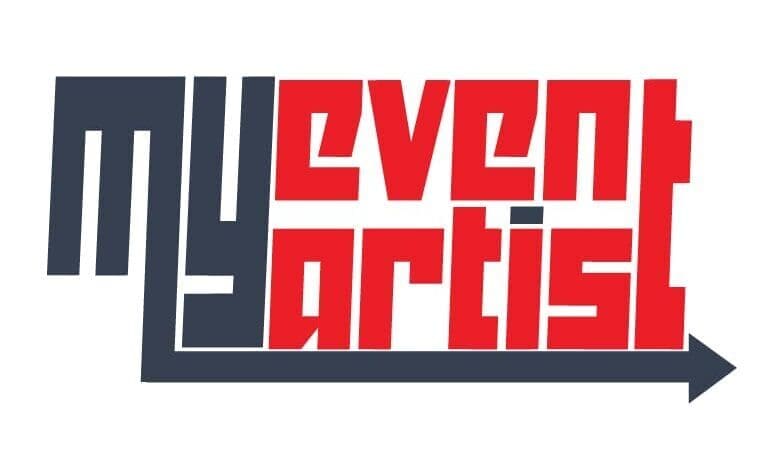In the competitive realm of sports, branding plays a pivotal role in establishing team identities and cultivating fan loyalty. Central to this branding is the logo, a visual representation that goes far beyond mere aesthetics. Logos serve as emotional symbols for fans, players, and the community, creating connections that extend beyond the game. One often-overlooked aspect of logo design is the psychology of color. Choosing the right colors can significantly influence how a logo is perceived, how it resonates with audiences, and ultimately, how it impacts the success of a sports brand. In this blog post, we will explore the psychology of color in sports logos, how it shapes brand identity, and best practices for logo design.
1. The Importance of Color in Branding
Creating Instant Recognition and Emotional Responses
A. Establishing Brand Identity:
- Visual Identity: Color is one of the most recognizable aspects of a logo. Teams need a color palette that stands out and is easily remembered by fans. Think of how quickly one can recognize the red of the Chicago Bulls or the blue and yellow of the Los Angeles Lakers. These colors evoke a sense of loyalty and identity among their supporters.
- Synchronization with Values: The colors chosen for a logo should align with the team’s values and mission. For example, a team that prides itself on strength and aggression may lean towards bold, vibrant colors that convey energy and power.
B. Evoking Emotions:
- Psychological Impact: Colors can induce different emotions and reactions among viewers. Blue can promote feelings of trust and calmness, while red can evoke passion and excitement. Choosing the right color influences how fans feel about the team and their enthusiasm for attending games.
- Generating Loyalty: A logo’s color not only garners initial attraction to a brand but can also cultivate long-term loyalty. When fans associate positive experiences and emotions with specific colors, their loyalty to the team strengthens.
2. The Psychology of Colors in Sports Logos
Understanding the Emotional Implications of Different Colors
A. Red: Energy and Passion
- Symbolism: Red evokes intense emotions such as excitement, passion, and aggression. In sports, it’s often associated with energy and determination.
- Usage Examples: Many teams leverage red in their logos to symbolize strength. Teams like the Liverpool Football Club harness red to energize their fans and convey their fighting spirit.
B. Blue: Trust and Dependability
- Symbolism: Blue is associated with calmness, trust, and reliability. It can also signify loyalty and stability, making it a popular choice among teams seeking to establish long-term connections with their fanbase.
- Usage Examples: Teams like the New York Yankees use blue effectively to evoke feelings of trust and tradition, further solidifying their iconic status in the sports world.
C. Green: Growth and Vitality
- Symbolism: Green is often connected with nature, vitality, and growth. It can also symbolize freshness and renewal in the context of sports, particularly in outdoor events.
- Usage Examples: Organizations like the Boston Celtics use green to reflect a sense of community, connection to the city, and the rich history of the team.
D. Yellow: Optimism and Cheerfulness
- Symbolism: Yellow represents brightness, optimism, and cheerfulness. It can energize and draw attention, creating a youthful and fun atmosphere.
- Usage Examples: Teams such as the Los Angeles Chargers incorporate yellow in their branding to stimulate excitement and enthusiasm among fans while creating a visually striking contrast in their logo.
E. Black: Strength and Elegance
- Symbolism: Black is often associated with power, sophistication, and boldness. While it can convey strength and authority, it can also represent elegance.
- Usage Examples: Teams like the New England Patriots use black to communicate authority and resilience, contributing to a robust and serious image.
F. Orange: Enthusiasm and Creativity
- Symbolism: Orange combines the energy of red and the happiness of yellow. It is associated with enthusiasm, creativity, and determination.
- Usage Examples: Teams like the Miami Dolphins utilize orange in their logo to evoke feelings of excitement and fun, aligning with the vibrant culture of their home city.
3. How Color Choices Impact Audience Perception
Deciphering Fan Reactions
A. Creating Brand Loyalty:
- Fostering Emotional Connections: Familiar colors create emotional ownership among fans. When fans consistently see and interact with their teams’ colors, they develop personal attachments leading to actionable loyalty—like attending games or purchasing merchandise.
- Engagement Through Color: Bright, attractive colors can make the logo stand out in crowded venues or during broadcasts, keeping the brand top-of-mind.
B. Attracting Different Demographics:
- Understanding Target Audience: Different demographics may respond uniquely to certain colors. Younger audiences might gravitate towards vibrant, energetic colors, while older audiences may prefer classic, muted tones that represent tradition.
- Adjusting for Local Culture: Colors that resonate strongly with local cultures can enhance community engagement. Understanding the local population’s color preferences can significantly boost attendance.
4. Best Practices for Choosing Colors in Sports Logos
Creating Effective and Memorable Logos
A. Research and Testing:
- Conduct Surveys: Gather insights into what colors resonate with your target audience. Use focus groups to test how different designs and color schemes impact perception and emotional connections.
- Competitor Analysis: Looking at competitors’ color choices can inform your strategy. Understanding what works well in your sporting niche allows you to position your brand distinctly.
B. Keep it Consistent:
- Brand Cohesion: Once a color palette is established, it should be consistently used across all branding materials, from jerseys to marketing collateral. Consistency reinforces brand recognition.
- Extend Beyond the Logo: Colors should be integrated into the overall experience at events, including merchandise, signage, and social media. This reinforces the brand identity and encourages fan participation.
C. Maintain Simplicity:
- Limit the Palette: Avoid using too many colors that can overwhelm the viewer. A strong logo typically utilizes a primary color and one or two accent colors for clarity and impact.
- Create Identification: Choose colors that allow for instant recognition. The simpler the combination, the easier it is for fans to identify with your logo.
5. Successful Examples of Color Usage in Sports Logos
Learning from Greatness
A. Local Sports Teams:
- Example of a Community League: A local youth baseball team incorporated blue and white in their logo reflecting loyalty and excellence. Their color choice resonated well within the community, strengthening attendance at games.
B. Professional Teams:
- The Chicago Bulls: Their iconic red and black logo conveys energy and strength, matching the dynamic spirit of the NBA franchise. The use of color effectively engages fans and creates emotional ties to the brand.
C. Charity and Non-Profit Events:
- Charity Fun Runs: Many charity events utilize bright colors in their logos to evoke positivity and motivation. The use of vibrant colors encourages participation and signals community togetherness.
6. How MyEventArtist Can Help You
Your Partner in Crafting the Perfect Logo
A. Expert Design Services:
- Understanding Color Psychology: At MyEventArtist, our experienced designers understand the psychology of color and how to utilize it effectively to create logos that resonate with your target audience.
B. Customized Solutions for Events:
- Tailored Logo Designs: We offer customized logo design services specifically catered to your event’s needs, ensuring that colors chosen reflect your team’s identity and mission.
- Comprehensive Branding Packages: In addition to logos, we provide branding packages that include color palettes, typography, and guidelines that extend to all your marketing materials.
C. Quality Assurance:
- Print-Ready and Digital Formats: Our logos are provided in various high-resolution formats suitable for both digital and print usage, ensuring high quality across platforms.
7. Conclusion
In the world of sports, a logo is far more than an artistic representation; it is a crucial element in how teams and events communicate their identity to fans and the community. The strategic use of color significantly impacts how a logo is perceived and can foster emotional connections, brand loyalty, and community engagement. A well-designed logo not only attracts attendees but also enhances the overall experience of participating in sports events.
At MyEventArtist, we are committed to helping you navigate this journey toward professional branding. Whether you’re looking to create a compelling logo that captures the essence of your sports organization or seeking custom designs that align with your vision, we have the expertise to make it happen. Explore our extensive collection of print-ready vector logo designs and customizable options at MyEventArtist Shop. Let us help you color your identity and elevate your event branding to new heights!
Keywords: sports logos, color psychology, branding strategies, fan engagement, logo design, community involvement.
#SportsLogos, #ColorPsychology, #BrandingStrategies, #FanEngagement, #LogoDesign, #CommunityInvolvement



Leave a Reply